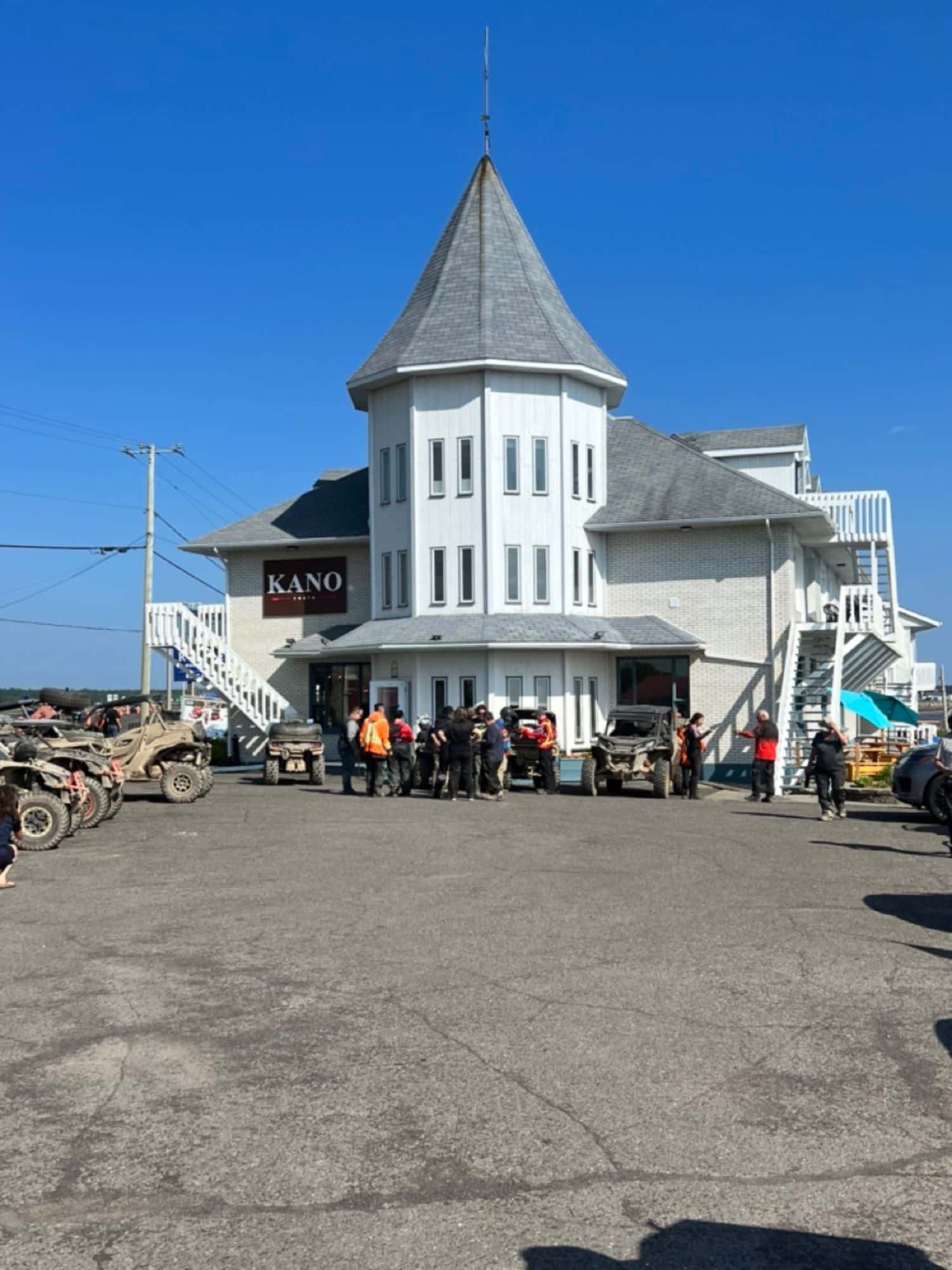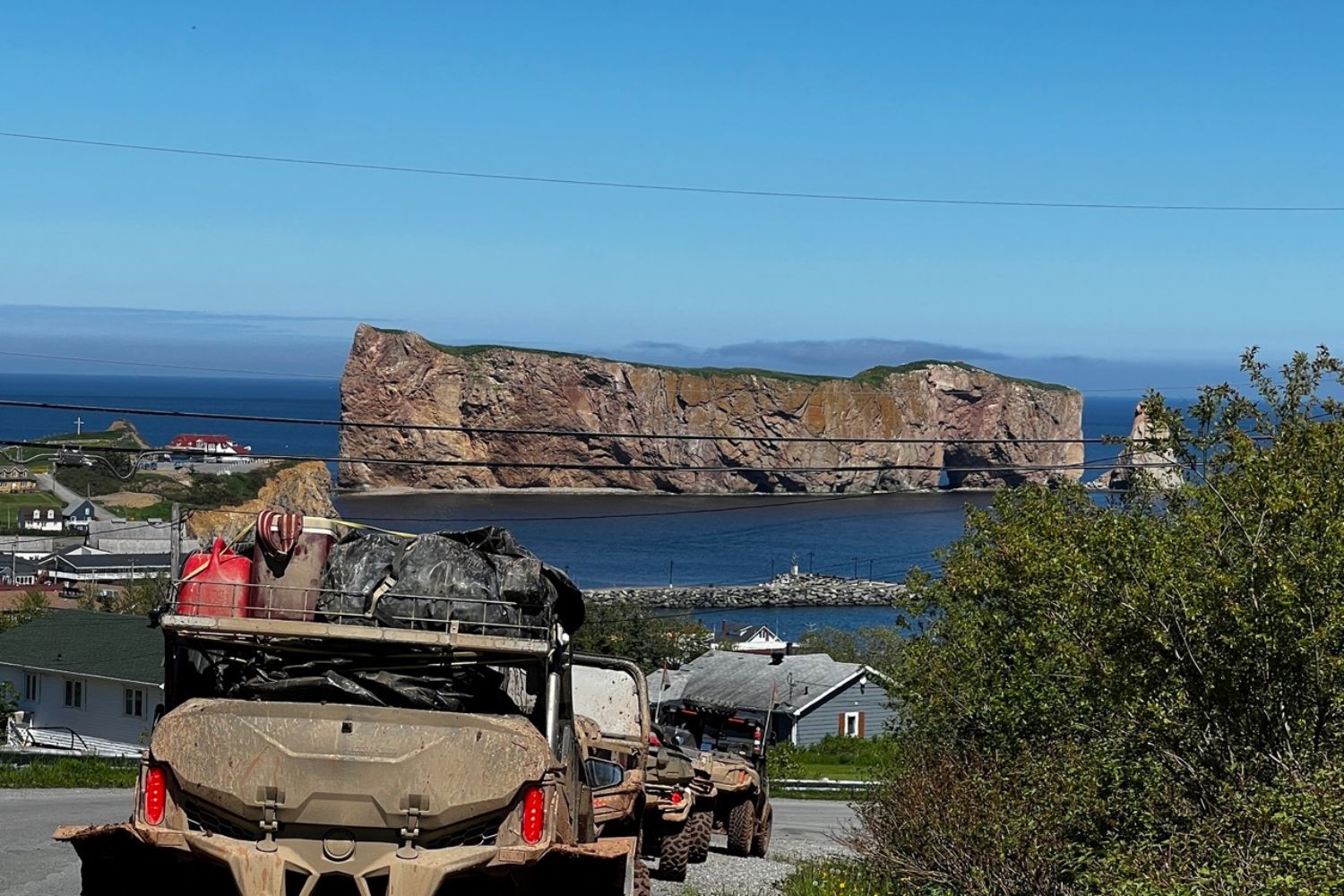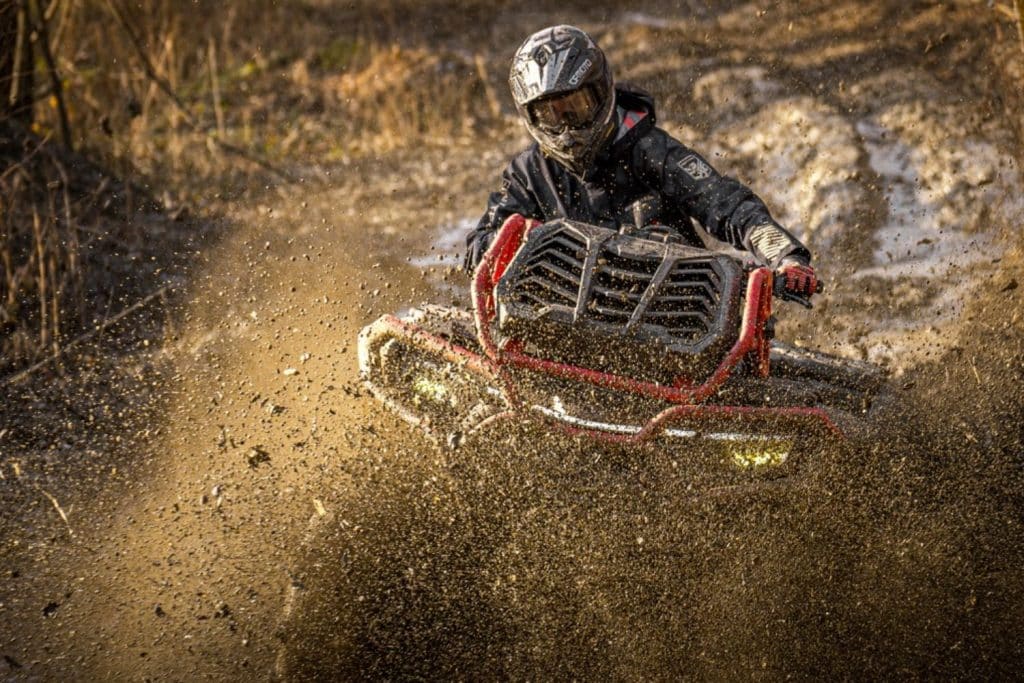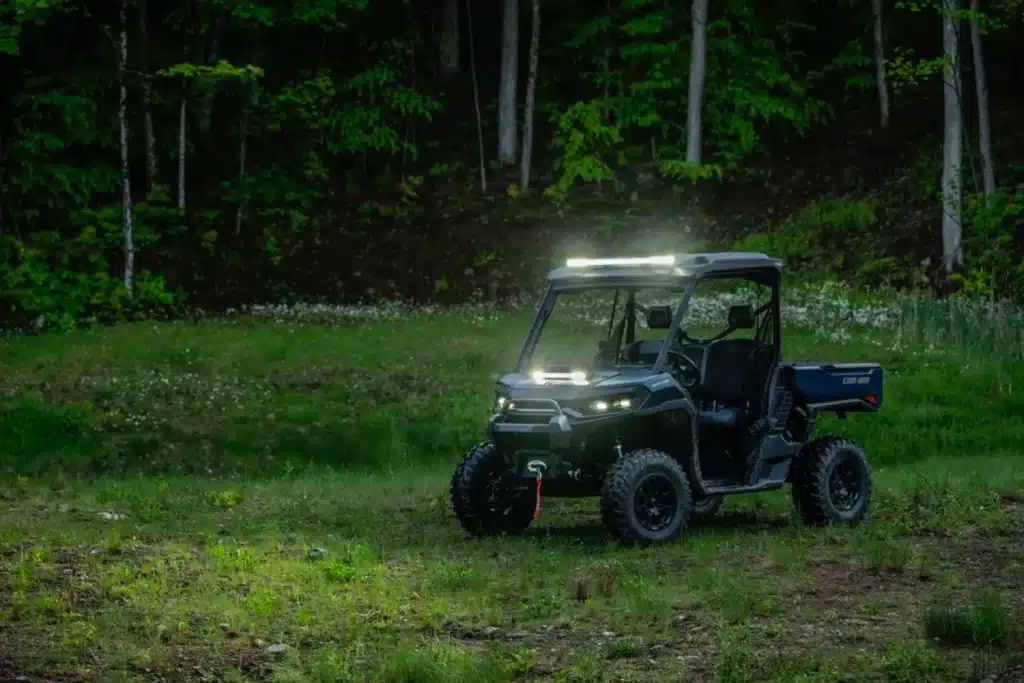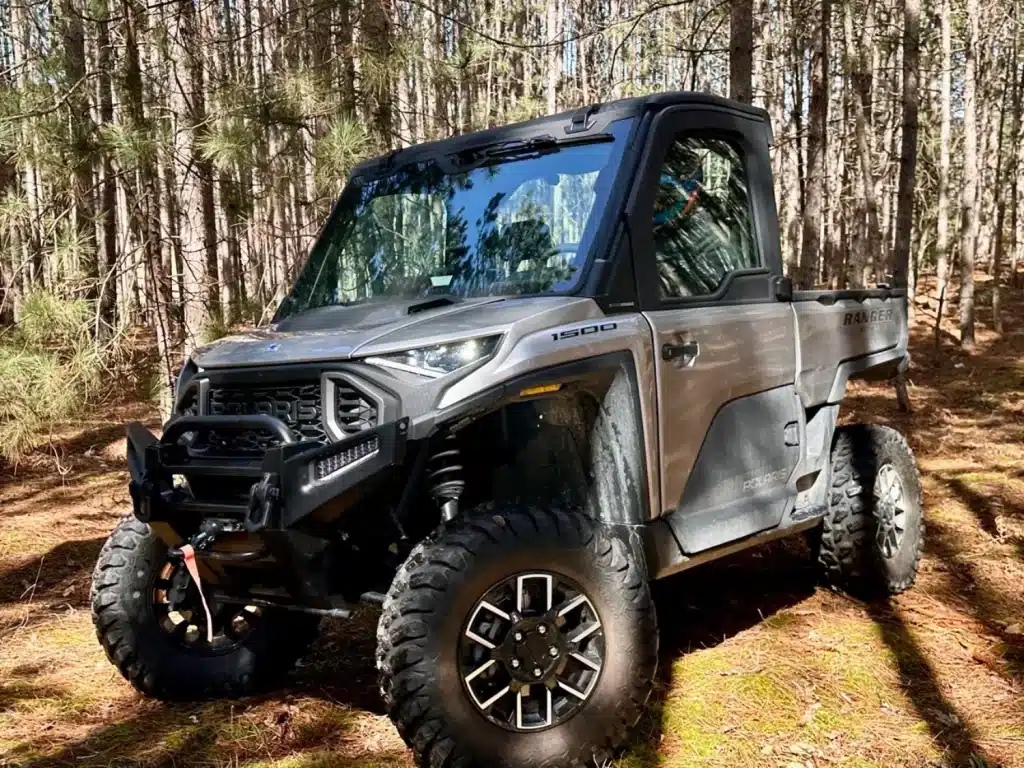Once again this year, I had the privilege of touring the Gaspésia Peninsula on ATV in mid-June. I was part of a group of around twenty quads and thirty people, three-quarters of whom had been there in previous years. The tour lasts seven days and covers a distance of 1,400 kilometers. So it’s important that the mechanical condition of the ATVs is in good shape before embarking on the expedition.
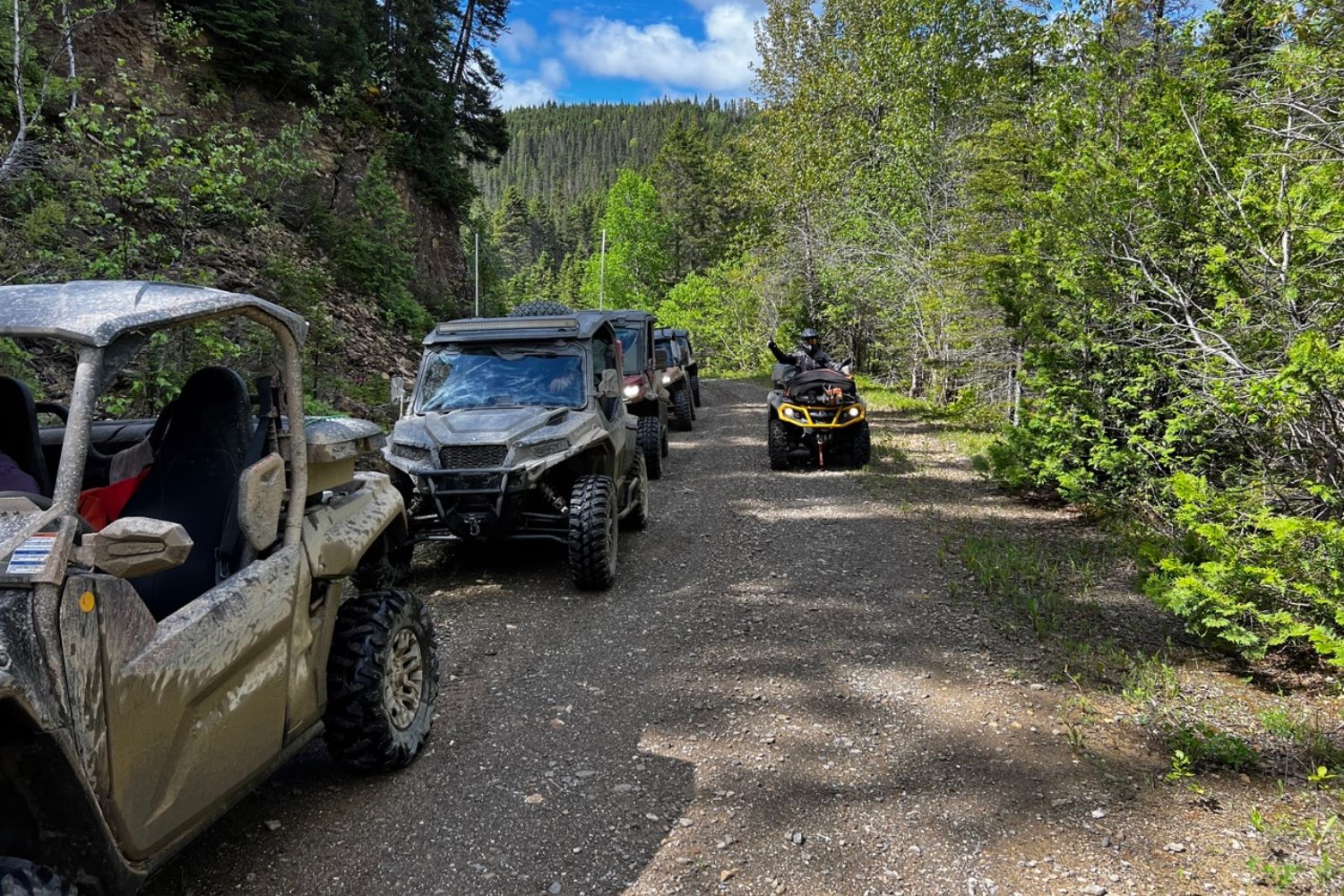
What is it about this trip that attracts so many people?
What is it that keeps us coming back year after year, like pilgrims making devotions at St. Joseph’s Oratory? There are many reasons, and each one is unique. As far as I’m concerned, there are several reasons that bring me back to the journey.
First of all, the camaraderie of the group is so invigorating, and you discover the affinities between people as you go along. Secondly, from the first thirty minutes of riding after the start, you’re somewhere else. It’s one of the most effective activities I’ve done in my life for getting away from it all. Our worries melt away, and our universe is summed up by the environment around the vehicle: nature, the trail, the other participants in the ride, the weather, and so on. Gone is the stress maelstrom of everyday life!
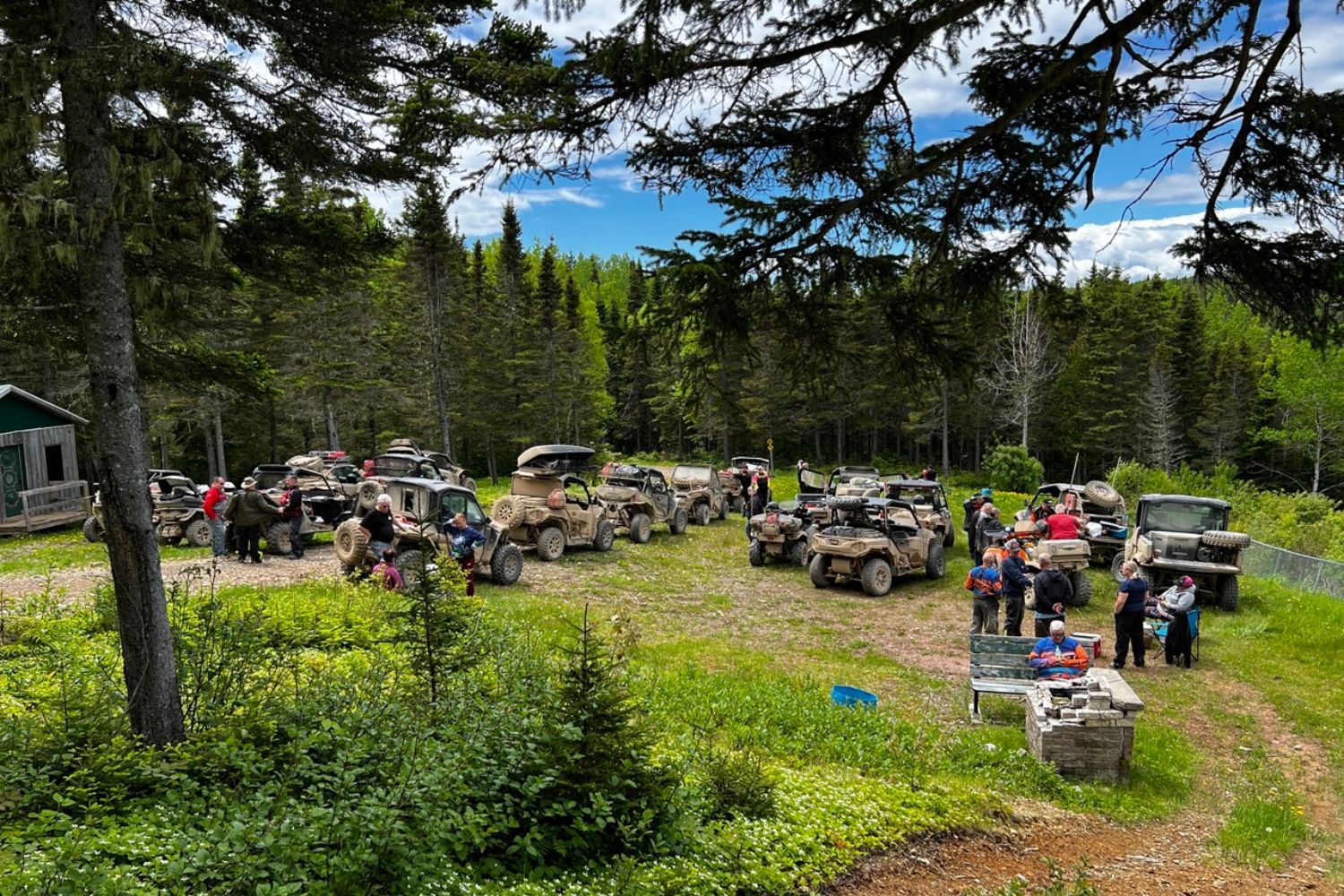
Finally, if we’re attentive to our surroundings, we look for reasons to explain the different manifestations of nature as we put our wheels down. Why are the waters of the Baie des Chaleurs so clear? What explains the different geological formations we see all over the peninsula? Why is the earth red in Percé and only in Percé?
Where do I go if I want to take part in a quad tour of the Gaspé Peninsula?
This is a question often asked by readers. The organized tour referred to in this text is private. In other words, participants who belong to an FQCQ quad club are hand-picked by the organizers to ensure the best possible group cohesion. New participants are known to the old ones, who guarantee compatibility with the group. So if no one knows you among the old-timers, it’ll be hard to fit in. This can be frustrating, but it’s important to understand that this is not a for-profit event. The organizers want to maintain the harmony of the group, not manage conflicts.
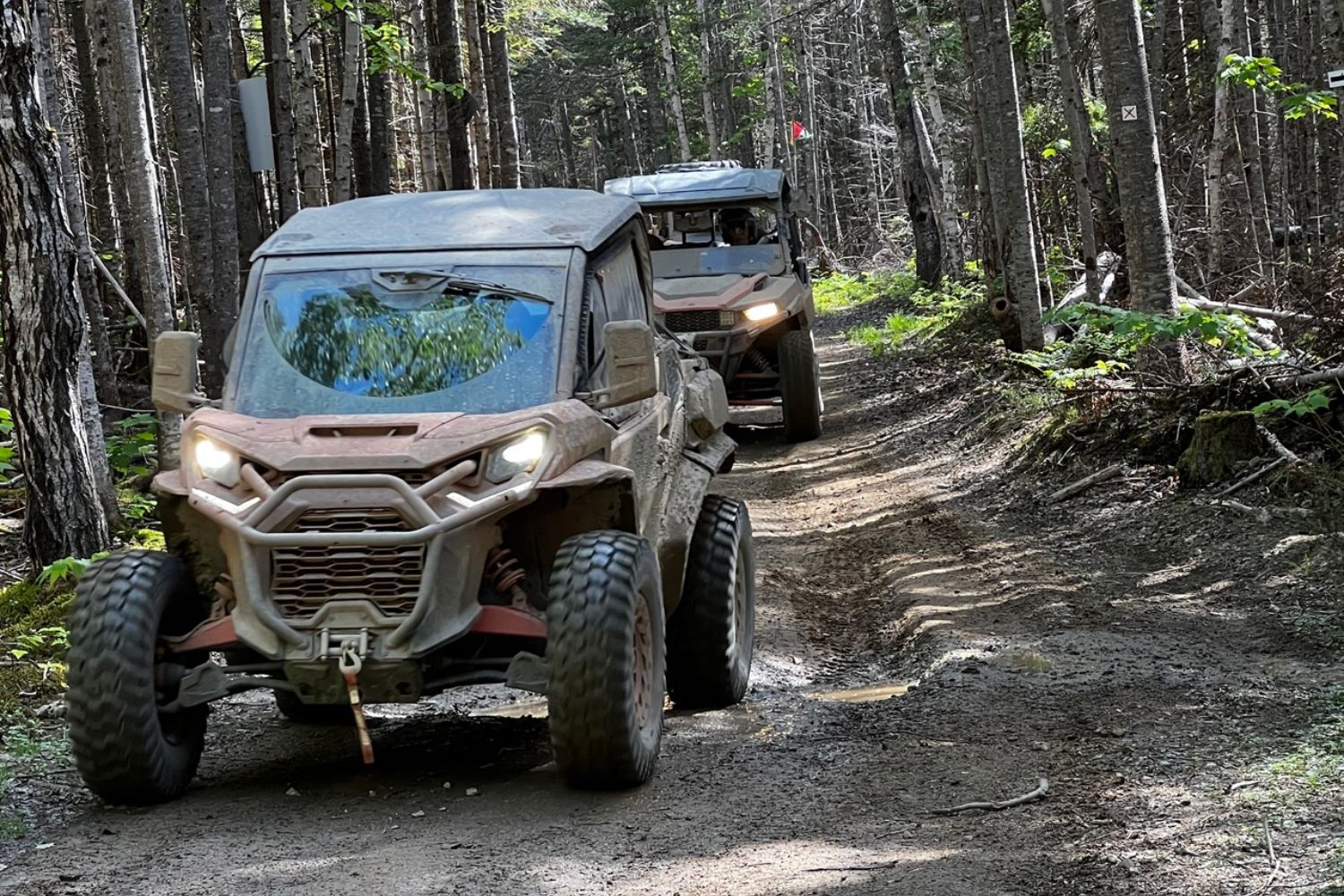
And yet, there is a demand for organized quad tours around the Gaspesia. There is a commercial company offering this service. Aventure Quad Gaspésie of Cap Chat has not ceased operations altogether, but has put them on hold. Unfortunately, there are no other companies offering this service.
For the time being, quad riders wishing to tour the Gaspé Peninsula will have to plan it on their own. The iQuad app can help with route finding, but accommodation is trickier for someone unfamiliar with the region. Perhaps to help quad riders who want to make the pilgrimage, the ATRs should publish a typical seven-stop itinerary for sleeping. Establishments that want to welcome quad riders could offer blocks of packages. In this way, the quad rider knows that the stopover will be pleasant, because he or she will be wanted by the environment and not perceived as a nuisance.
The pleasant sensation of starting a 1400 km journey
When you set off on a ride like this, the first moments are magical. In our minds, we switch from the anticipation mode we’ve been cuddling all winter to realization mode. The group sets off, people are happy and our universe is focused on the present moment. Within the first half-hour, everyday concerns are gone, replaced by the pleasure of feeling the wind on your face and the soothing scents of the forest. It’s a pleasure to ride along narrow paths whose branches caress the vehicle as you pass, or to ride along a more open path that allows you to contemplate superb landscapes.
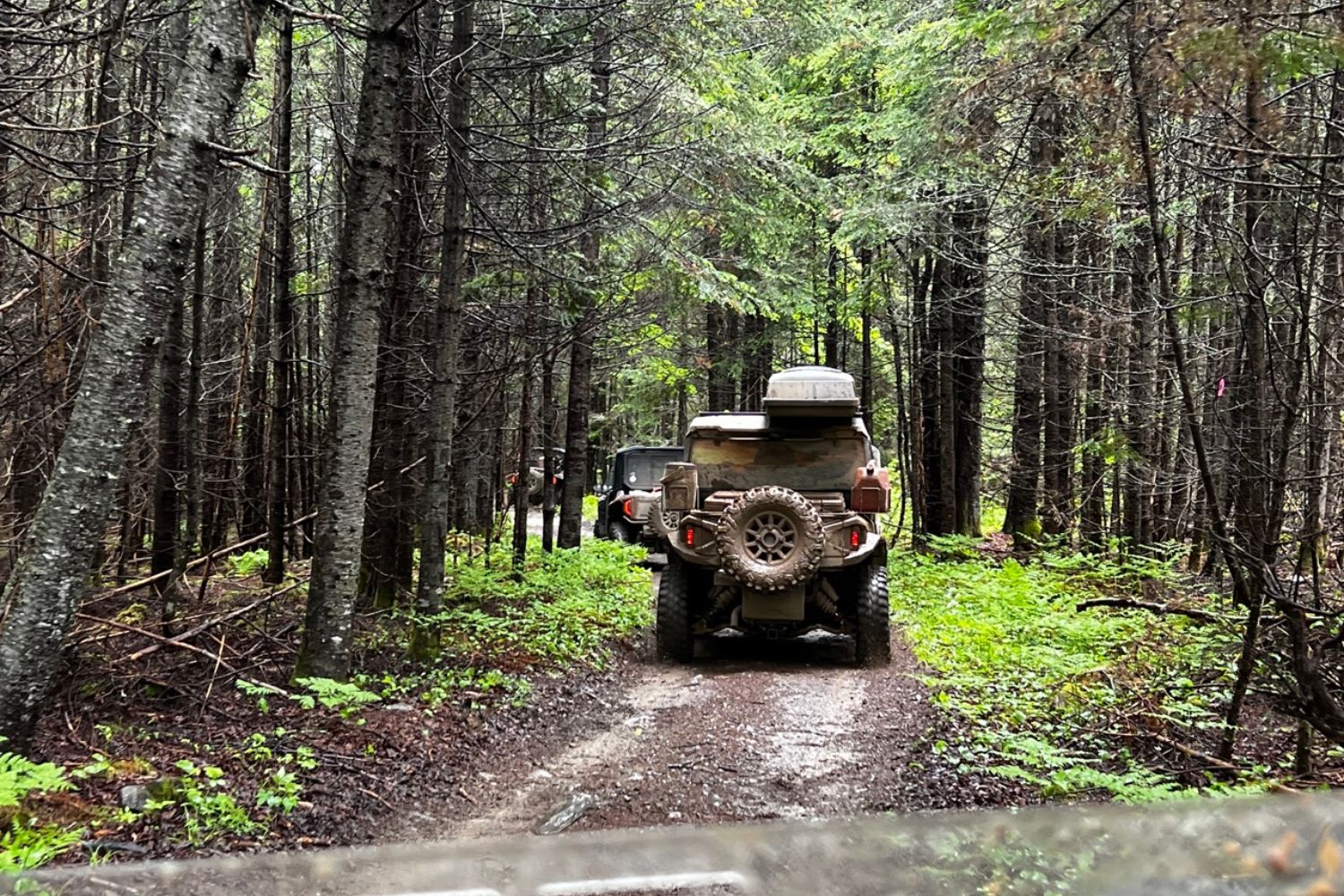
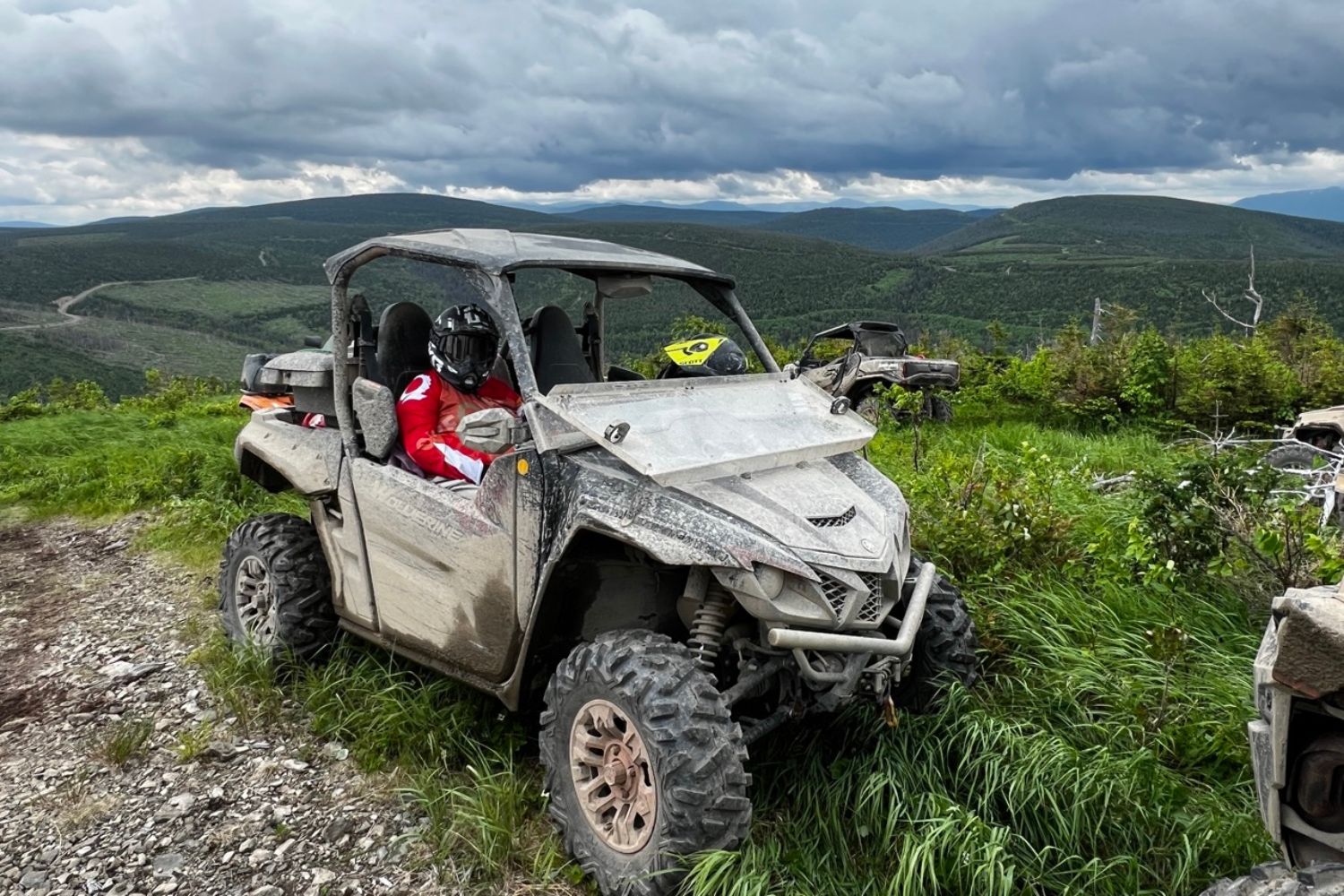
Our tour of the Gaspesia peninsula takes us through several distinct landscapes. First of all, the Matapedia Valley offers panoramas that are predominantly agricultural or forested. In the Baie des Chaleurs, we’ll be able to see the sea and smell the salty air caressing our nostrils. Not to mention the red earth behind Percé. The magic of Percé Rock is incredible, and we never get tired of contemplating it. We can also appreciate the incredible clarity of the Baie des Chaleurs rivers, especially the Bonaventure.
Then it’s back to the center of the peninsula, where you’ll ride through high mountains, dense forests and rivers that start at the outlet of a lake and swell as confluent streams join them.
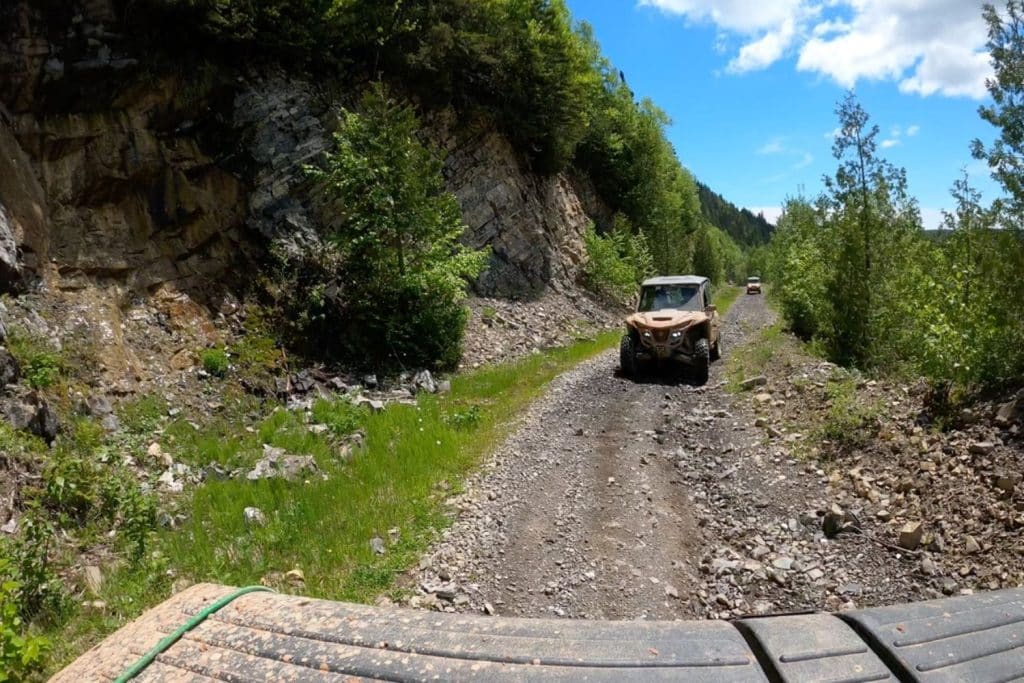
Just before arriving near the river at Rivière-Madeleine, we pass the old railroad right-of-way cut right into the rock. It may seem an incongruous place to run a railroad on a mountainside, but industrialist Charles W. Mullen set it up around 1920 to transport wood to a pulp mill. The company ran into financial difficulties and the train crashed into the ravine. The train conductor died in the accident. However, I still admire the technical achievements that were made in those days with limited technical means compared to today. Looking at the projects that are stalling in Quebec in 2024, one wonders where is the daring and genius of Quebec builders?
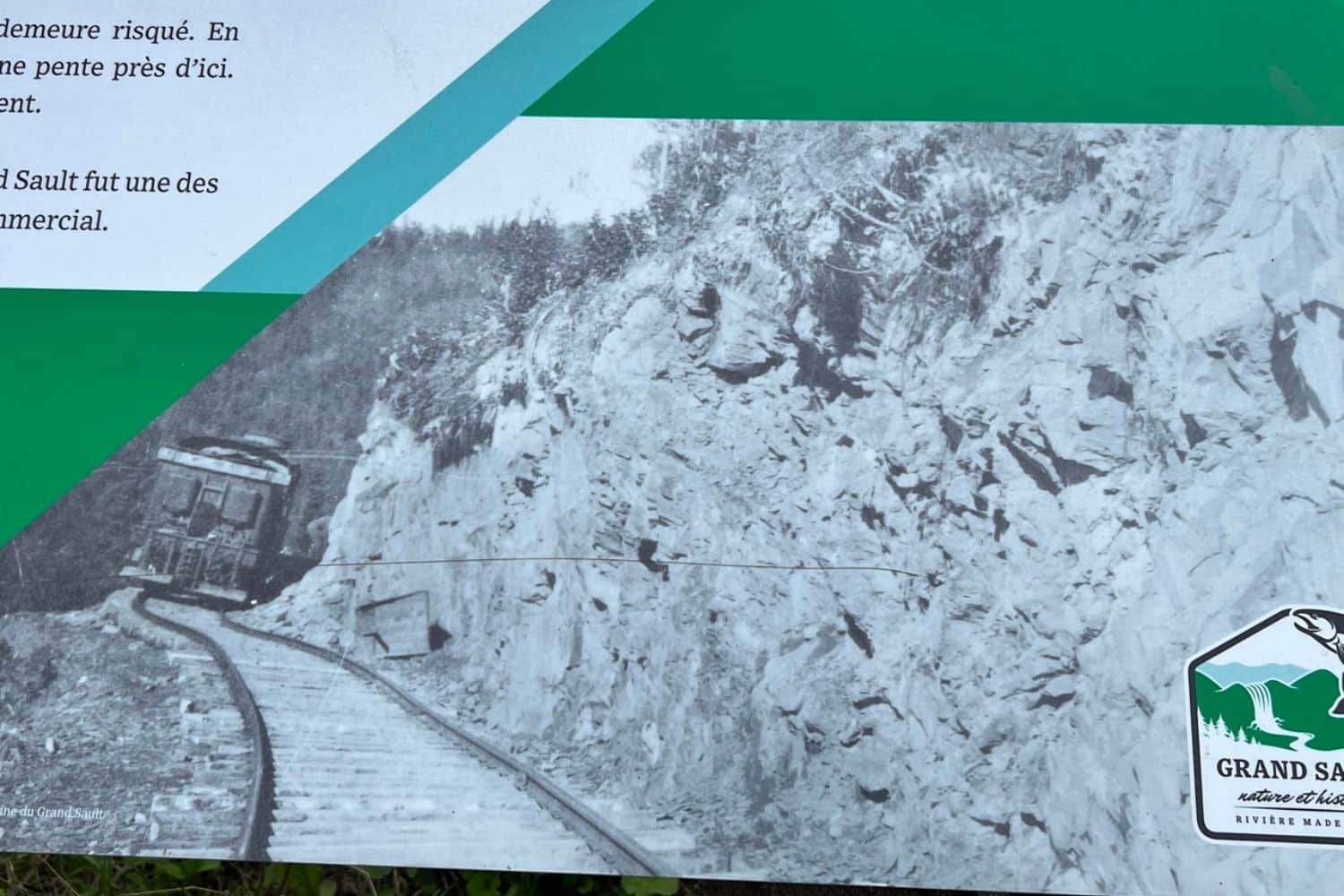
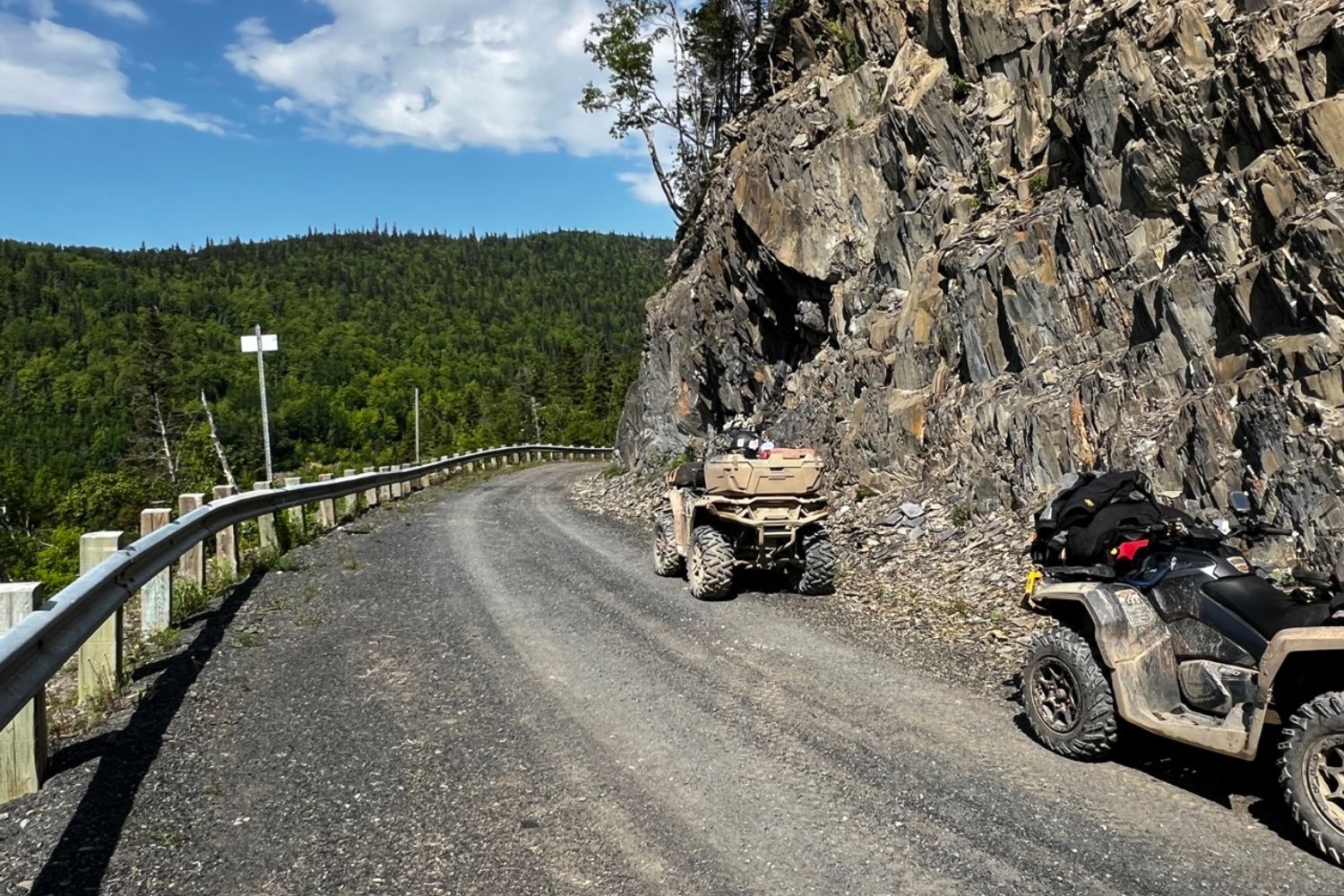
We emerge on the north shore of the Gaspé Peninsula, where the fusion of mountains and the St. Lawrence is perfect. Here, the trail takes us from mountain-top level to the river’s edge in breathtaking panoramas. And it’s here that you can feel the emotions of nature’s wonder!
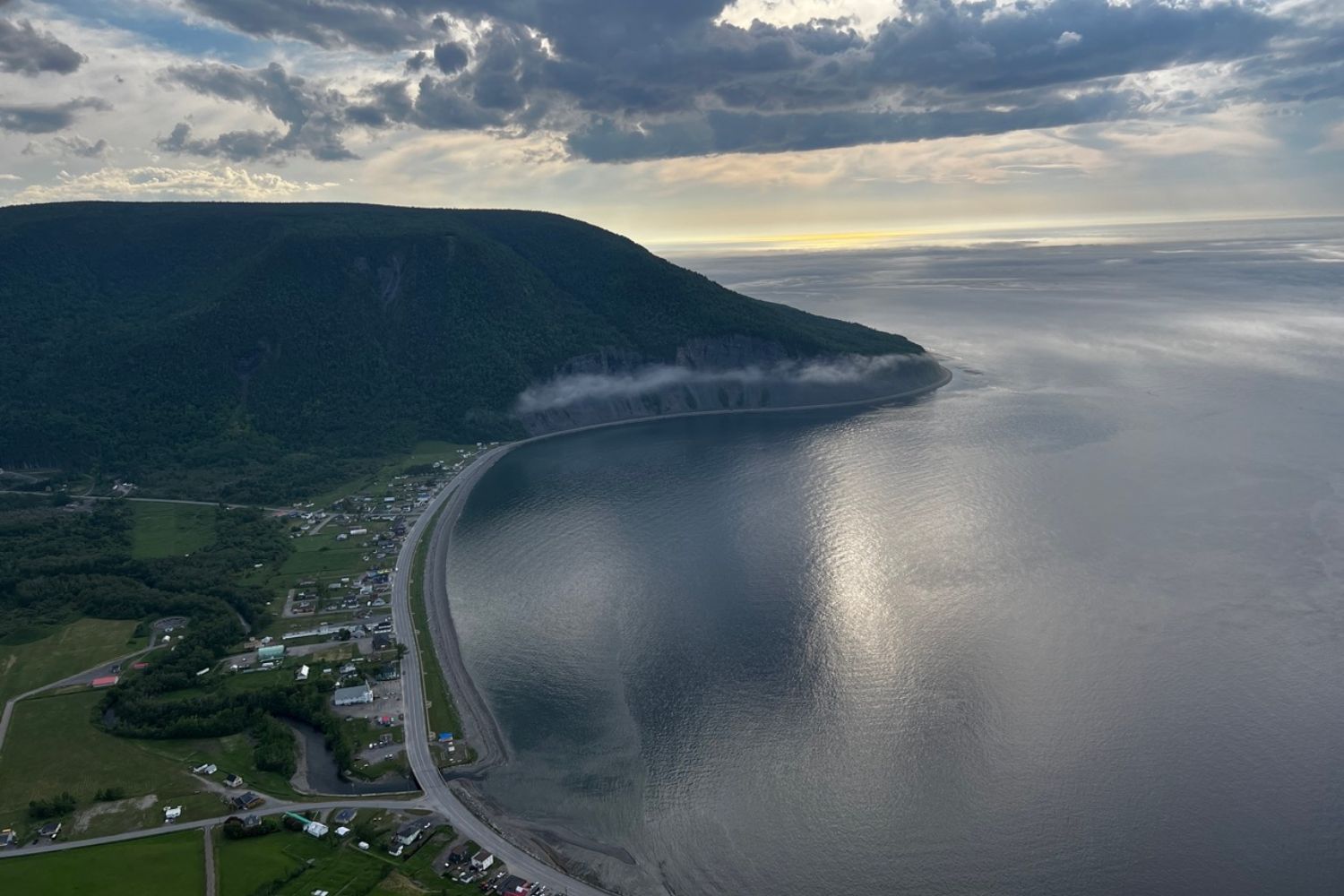
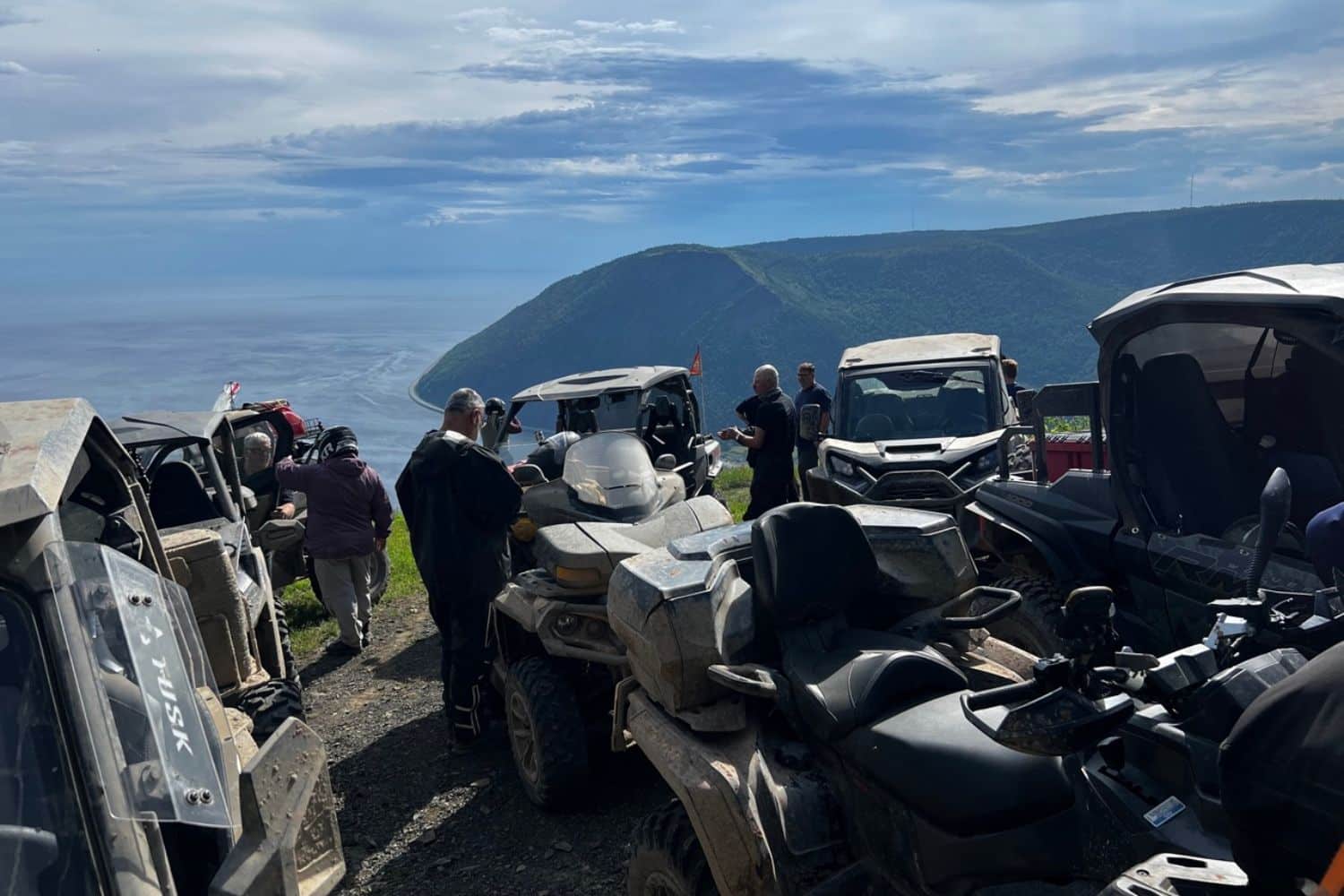
The geology of Gaspésie
As you drive around the peninsula, you’ll notice that the soil beneath your tires changes depending on the sector you’re in. It’s particularly striking in the Percé area, where the soil is red. It’s the only place you can see this in Gaspésie. Elsewhere in the Baie des Chaleurs, the soil is also richer and tends to be muddy in the rain. And as we go north, we come back to poorer shale soil that comes off in slabs. These chunks of shale are sharp and pose a threat to quad tires, especially when riding steep trails up hills. Don’t hesitate to use four-wheel drive to limit tire spinning as much as possible.
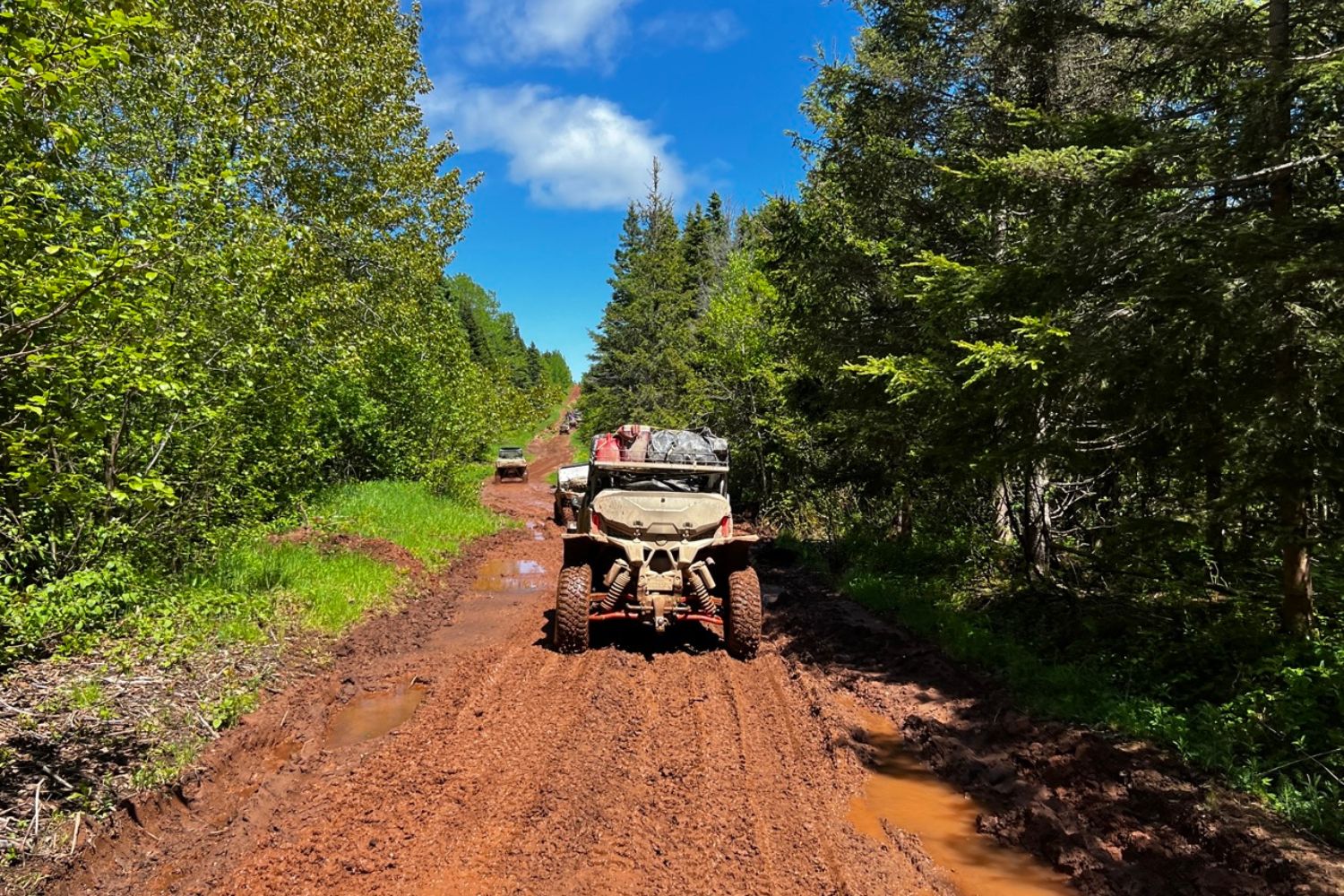
Without wishing to identify myself as an expert in pedology (NDA: the scientific study of soils), a brief research on geological formations will teach us some very interesting things. First of all, we need to understand that the time scale for the geological formation of a territory is tectonic. In other words, it moves at the same speed as the plates of the Earth’s crust. The Gaspé region was formed by the compression of rock sliding along the Logan fault.
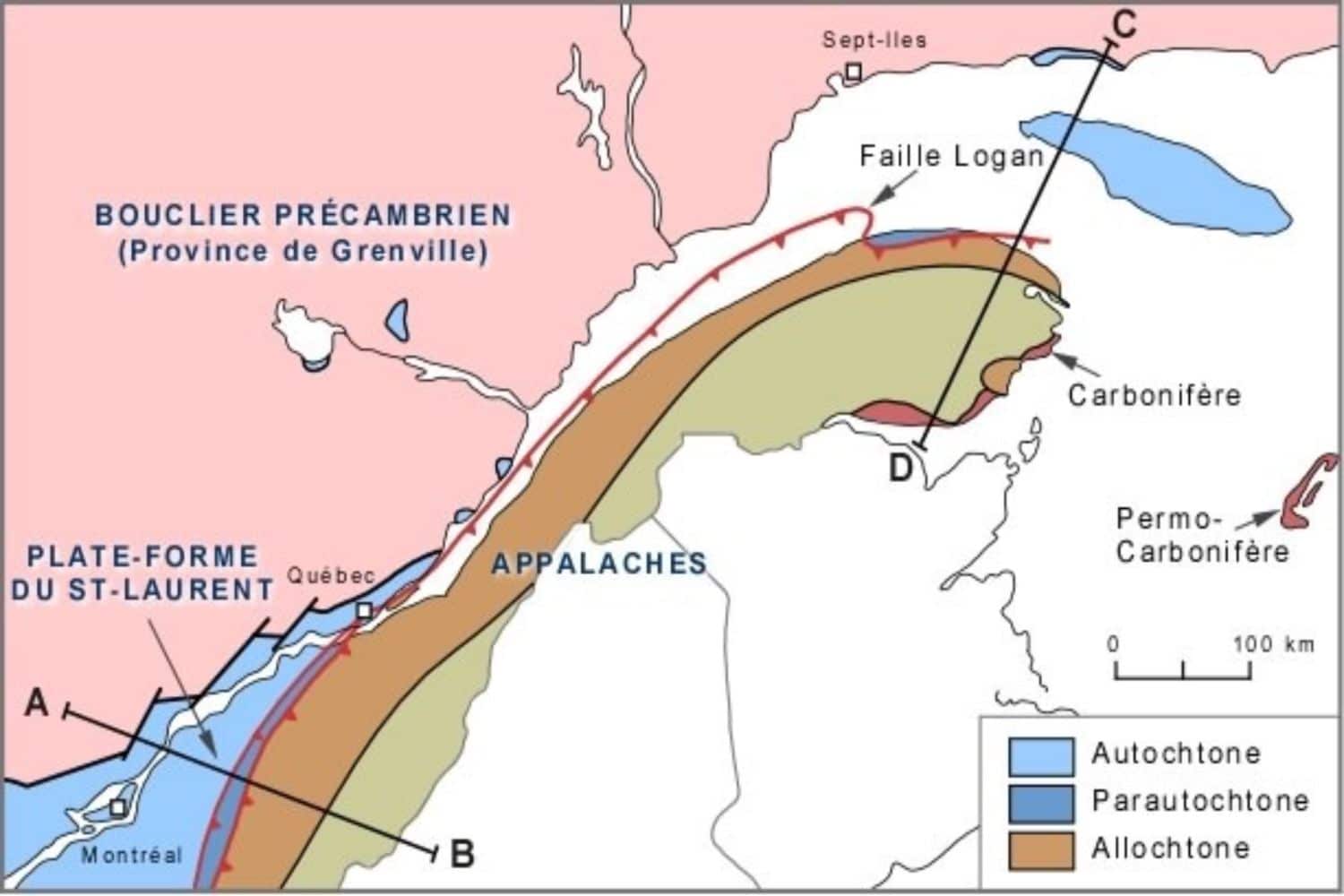
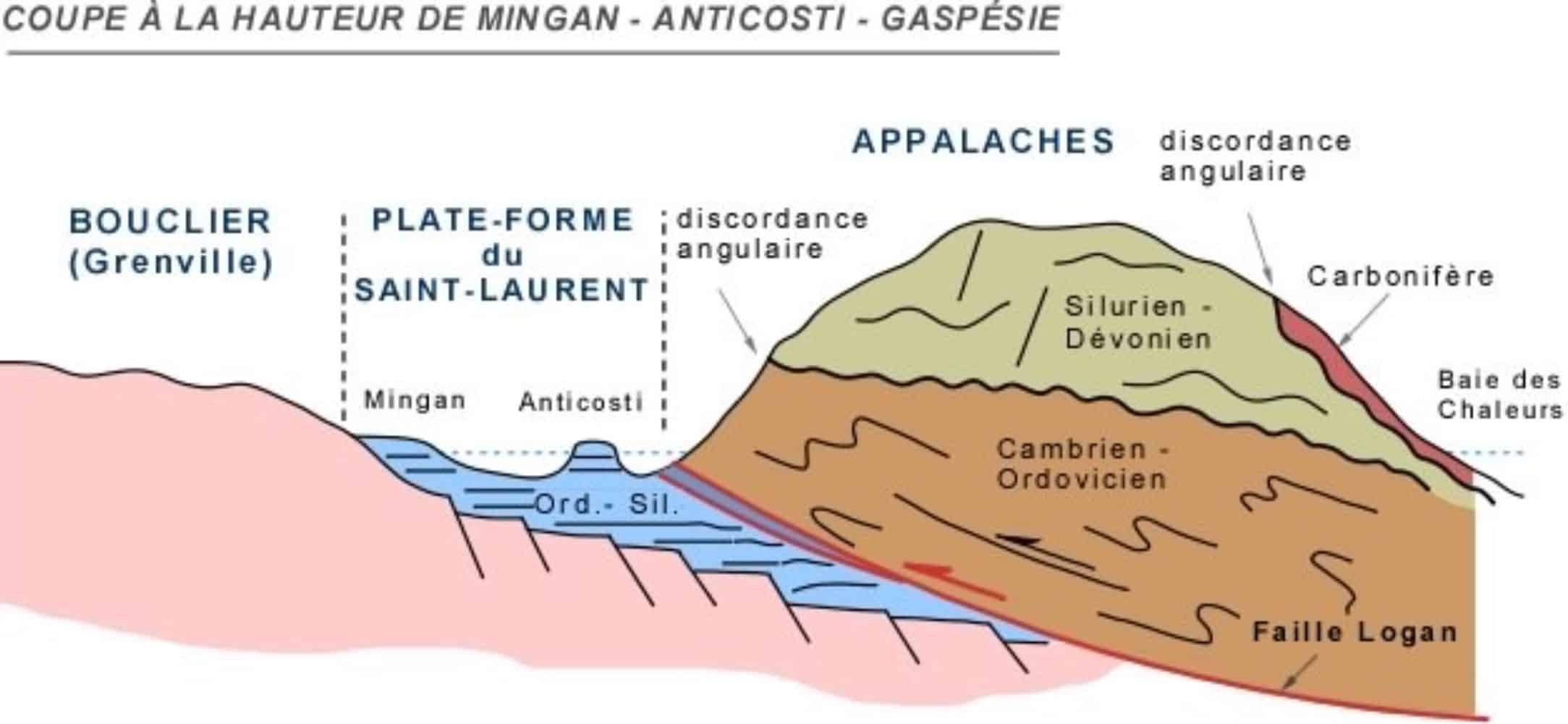
The first phase of Appalachian formation (in brown on the cross-section above) is composed of sedimentary and volcanic rocks dating from 540 to 480 million years ago. These rocks are highly folded and fractured, and are composed of ancient oceanic basin deposits. The second phase (green) dates from around 440 million years ago and is superimposed angularly on the previous group. It is composed of sedimentary and volcanic rocks that are less deformed than the older rocks (in brown). Finally, the third phase yields the red rocks of Percé, slightly deformed sedimentary rocks dating from the Carboniferous (300 million years), deposited in a terrestrial environment. The direction of deposition is different from that of the first two phases. These layers represent deposits resulting from the erosion of the mountain range, i.e. sandstone, a sedimentary rock composed of solidified sand grains and iron particles that have oxidized in the presence of oxygen. This formation is found only in the southern Gaspé Peninsula, the Magdalen Islands and Prince Edward Island, and is a UNESCO World Heritage Site.
A sense of accomplishment at the end of the trip
Riding for seven days and 1,400 kilometers with a group of about 30 people is a very enjoyable activity. We developed friendships that we’ll be happy to revisit on a future tour of the Gaspé Peninsula or elsewhere on the trails. Of course, there are always anecdotes and vehicle breakdowns that leave the owner feeling a bit shaken, but which we’ll laugh about later.
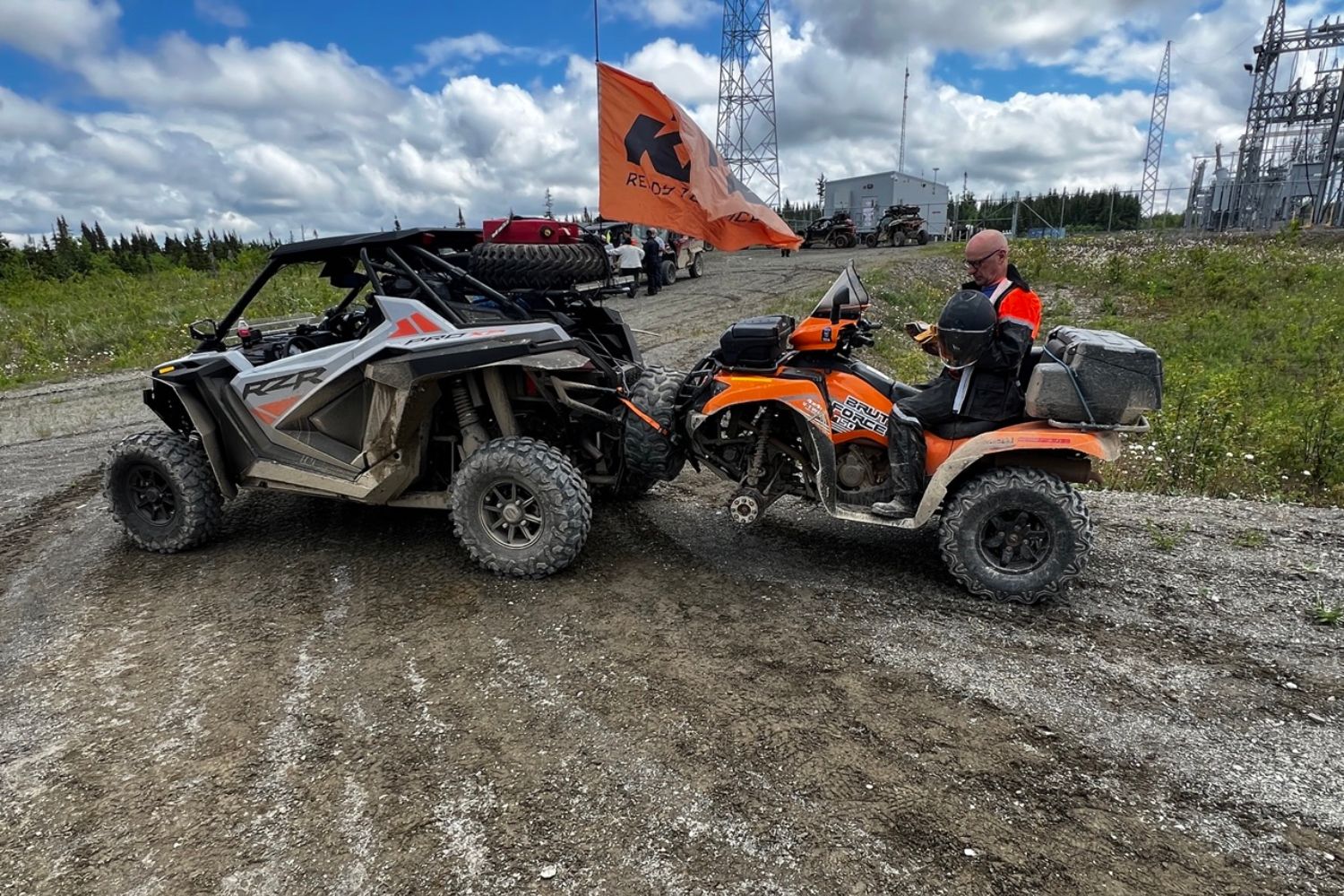
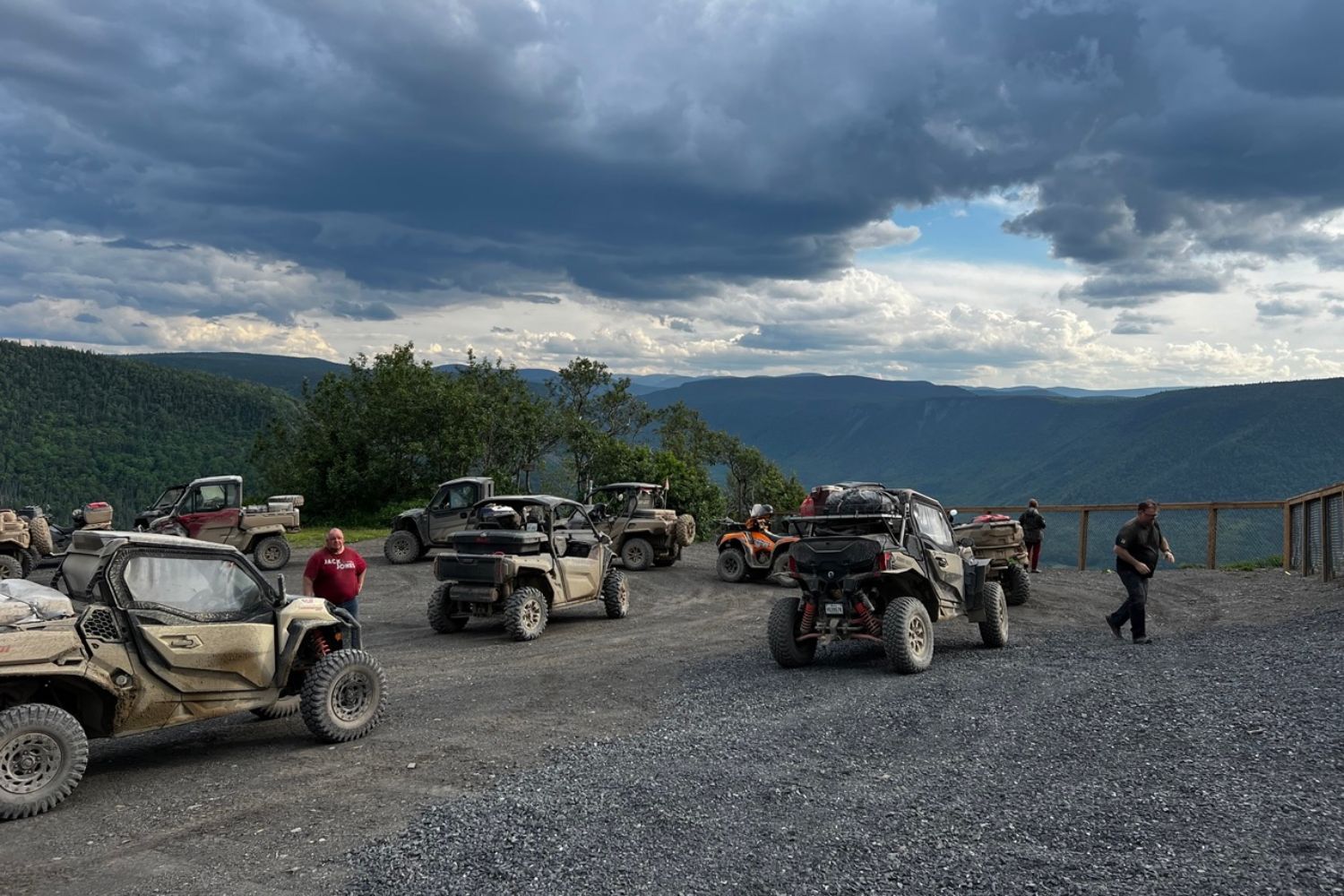
The Gaspésie environment is magical, because you can still feel and see the wild side of nature. Few regions offer the land-and-sea landscape combo that keeps us in awe. It’s a richness that the associations of the Gaspésie’s MRCs have recognized, as they have set up a program to revitalize OHV infrastructures with a budget of $10 million…
Finally, our group of riders left about $70,000 in the Gaspesia community in seven days. Contrary to what is asserted in another quad media outlet, quad riders are no longer “sandwich eaters”, but tourists in their own right who come to visit a region.
